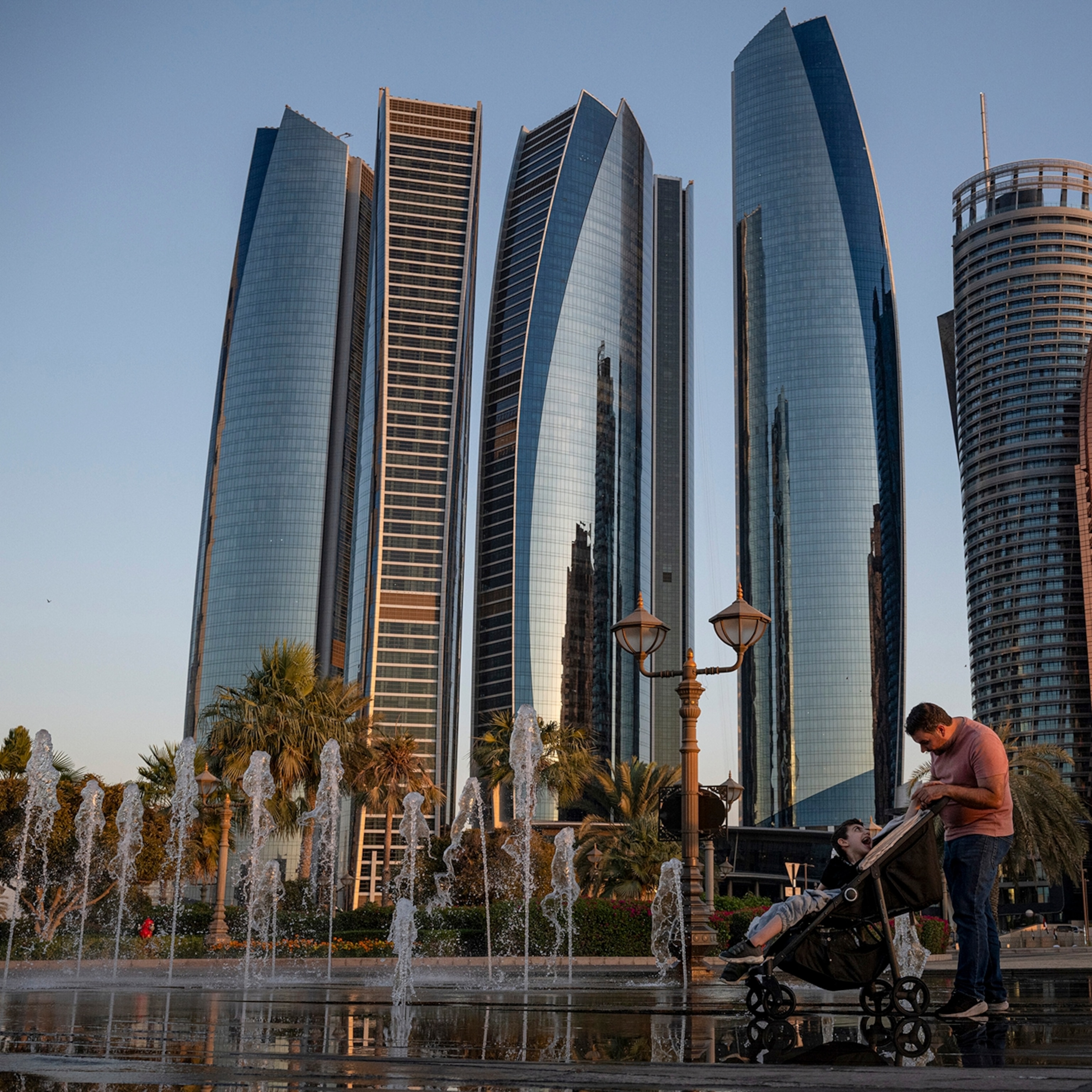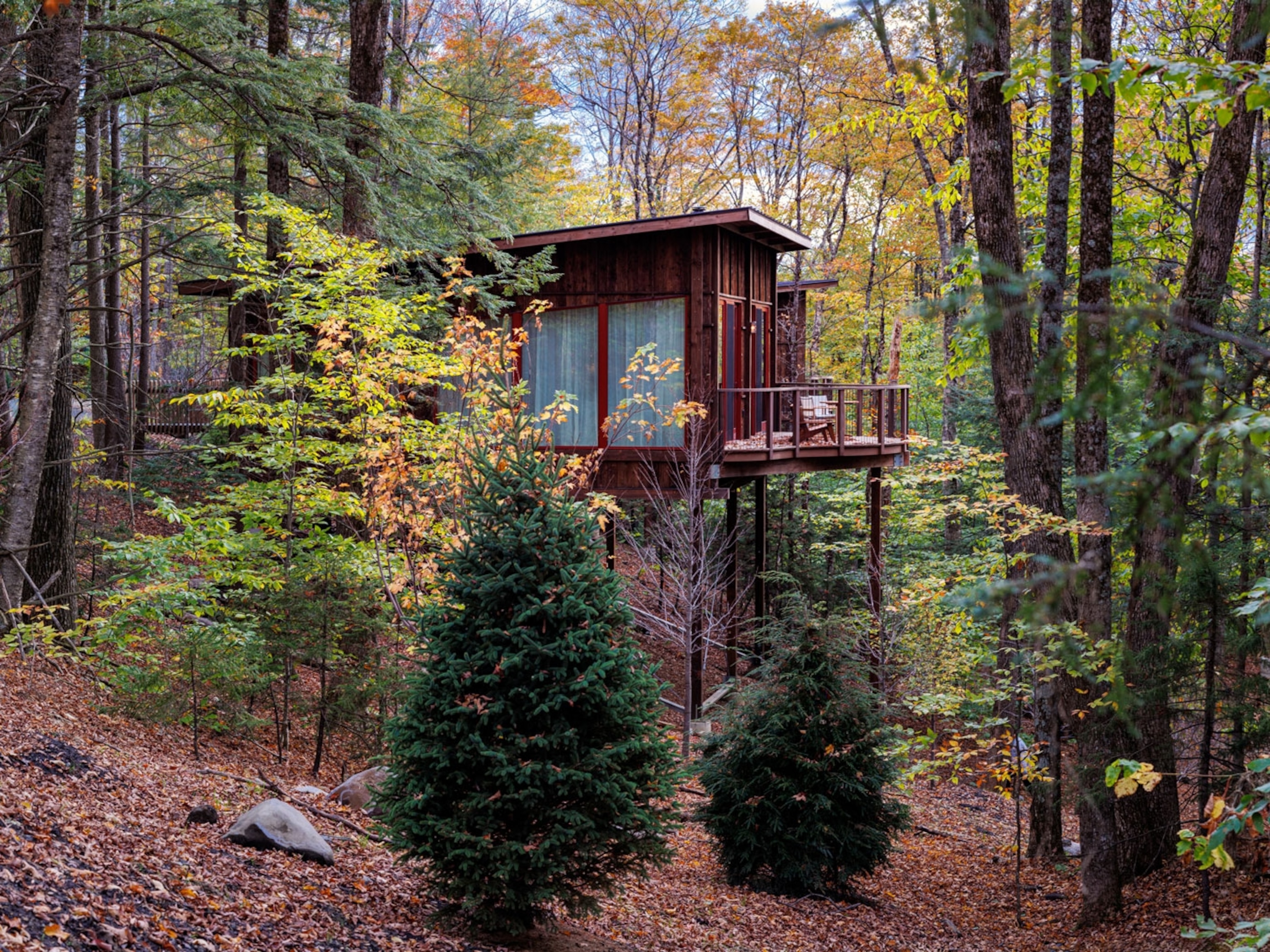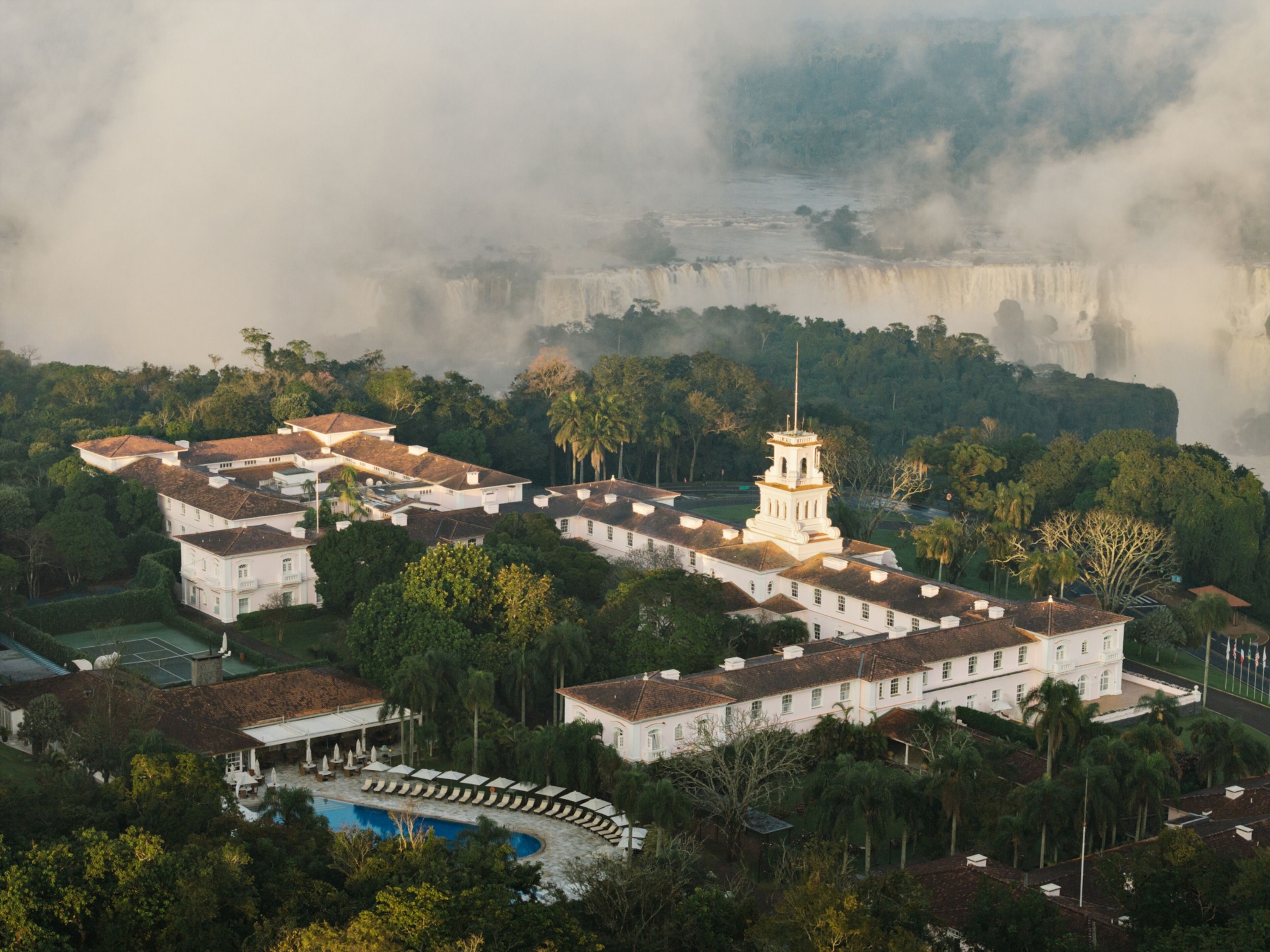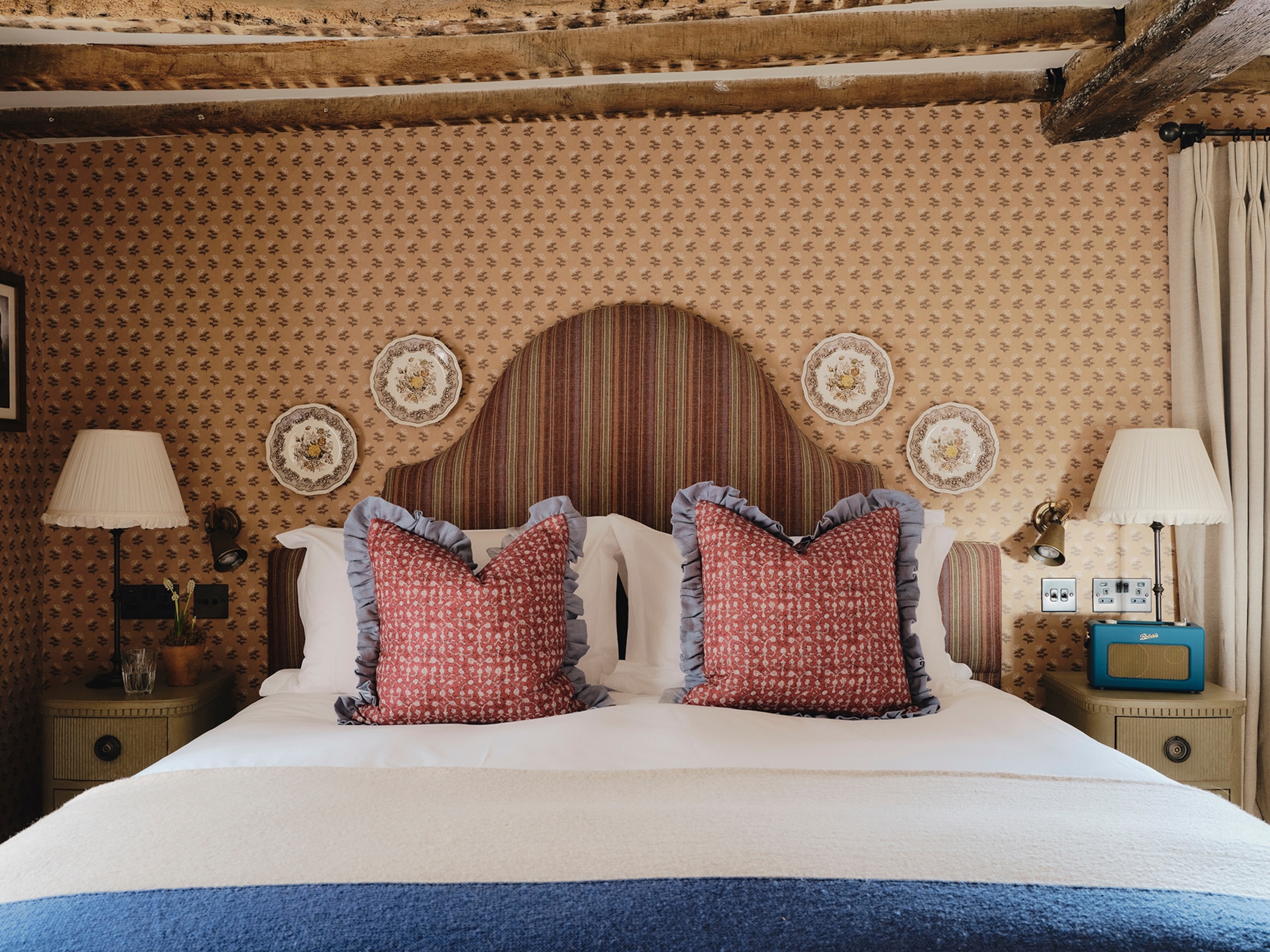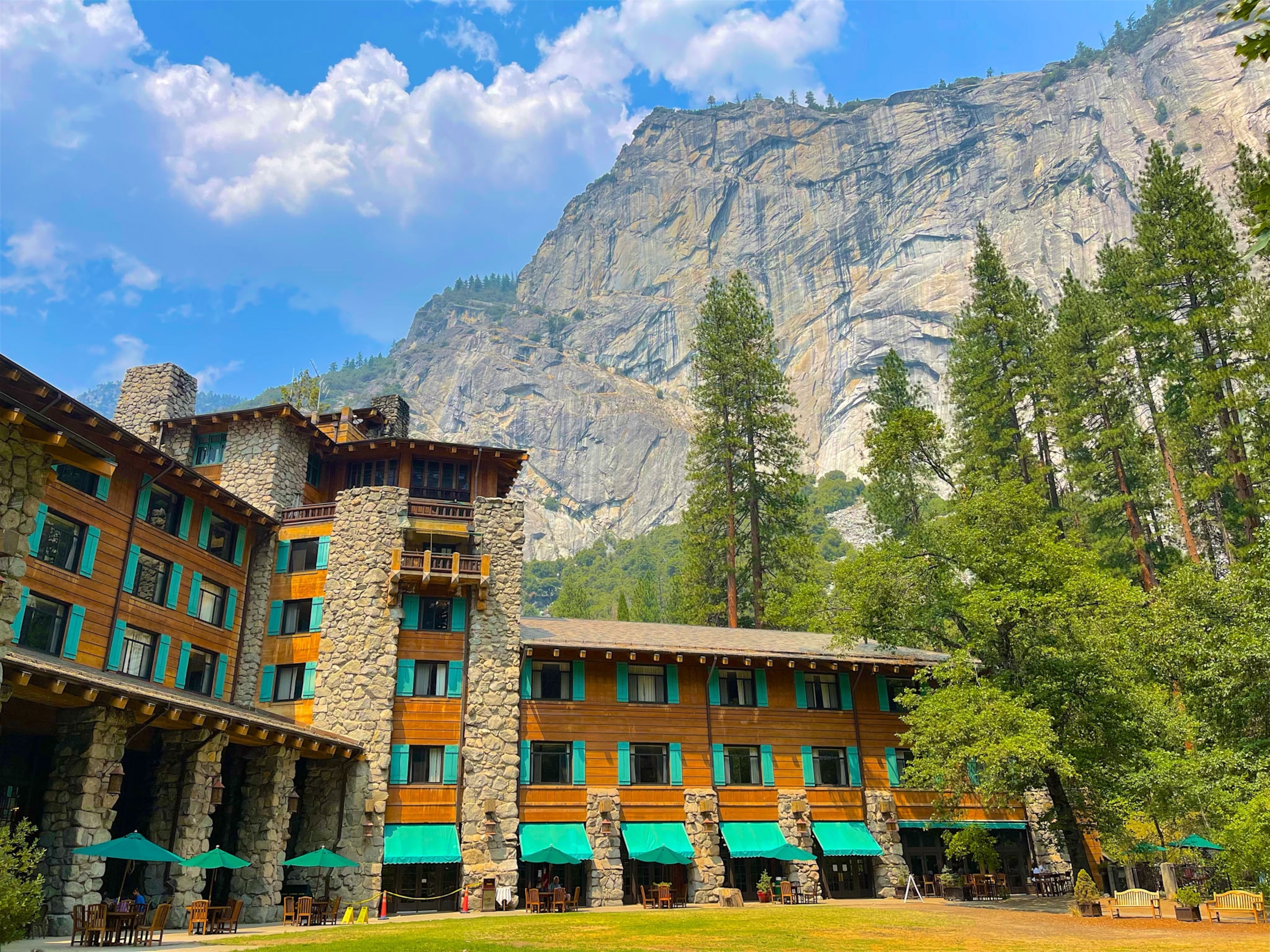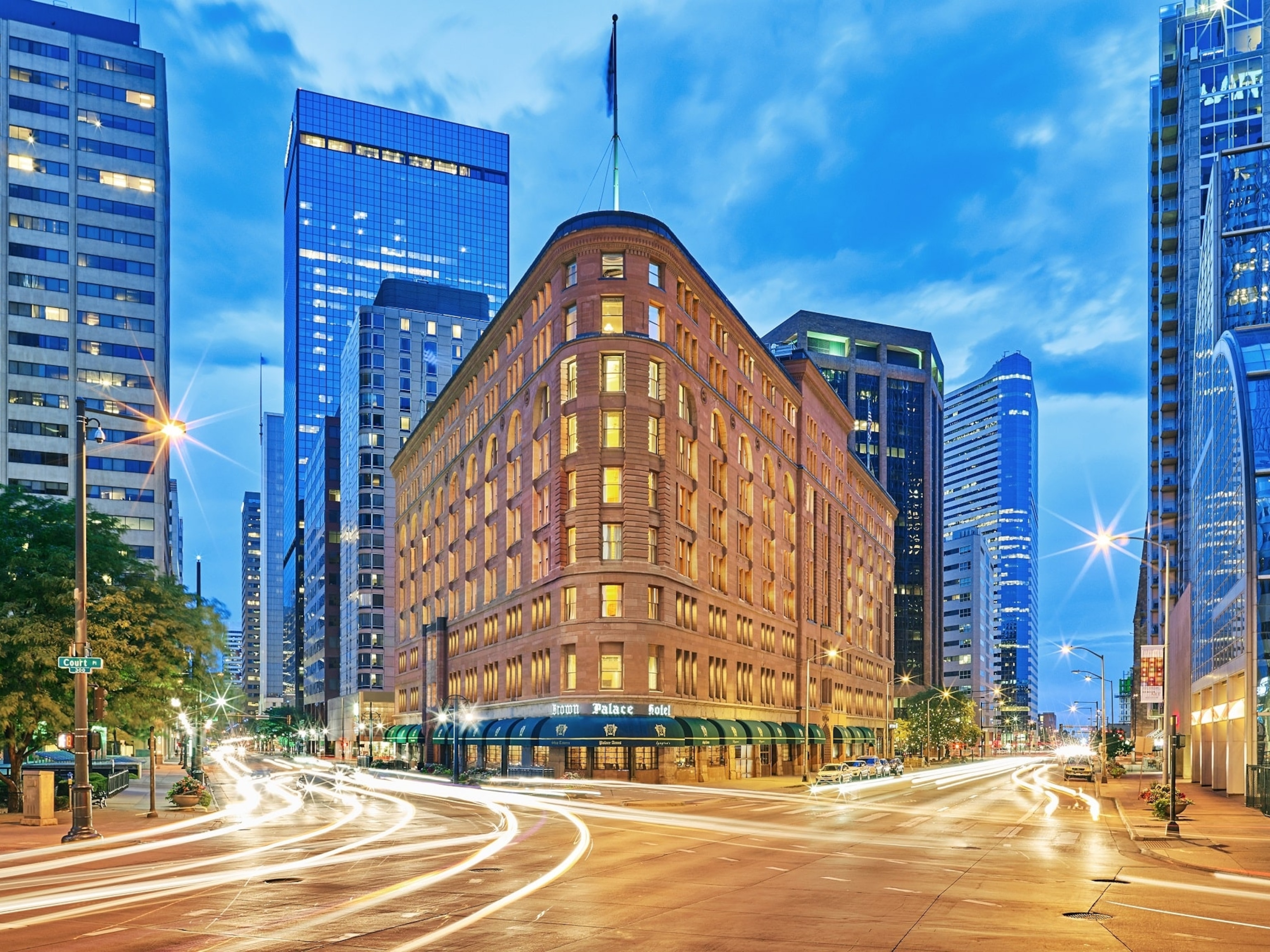A guide to renting a house during a pandemic
With telework and online school stretching on, Americans are booking long stays in short-term rentals—speedy WiFi, home offices, and all.
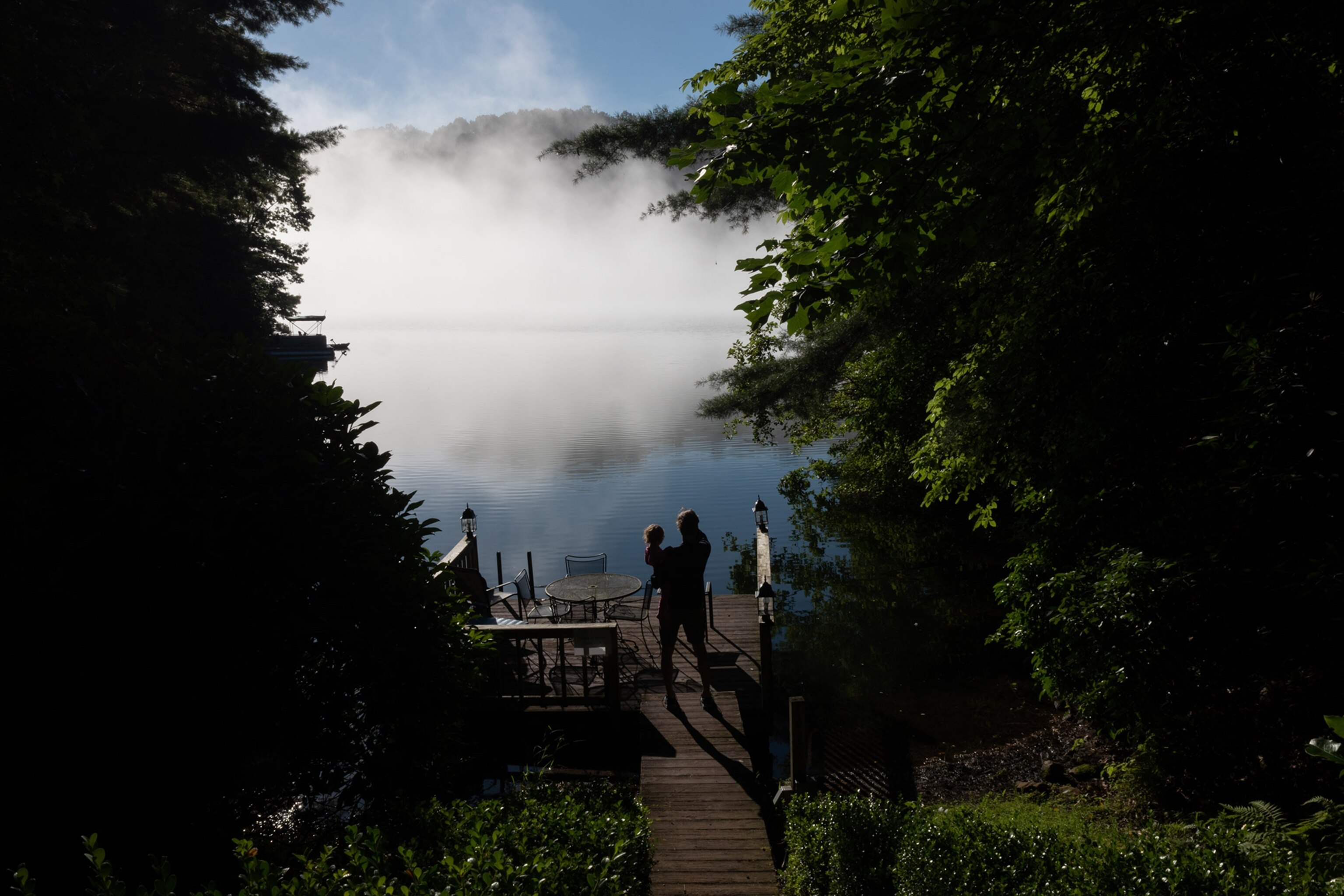
Months of COVID-19 lockdowns, case surges, and travel bans have tamped down Americans’ wanderlust in 2020. A new analysis by the American Hotel and Lodging Association found that only 33 percent of Americans say they have traveled overnight for leisure or vacation since March, and only 38 percent say they are likely to do so by the end of 2020.
But with countless students attending school and workers telecommuting indefinitely, Americans find themselves with newfound flexibility about where “home” is—and how long they can be away from their primary residences.
That’s spurred a boomlet of longer-term vacation rentals, says Melanie Fish, a family-travel expert for booking platform Vrbo. Guests are checking into properties outside of traditional summer travel months and staying, on average, for more time. In March, Airbnb reported that the number of guests booking longer-term stays (28 days or more) had nearly doubled year over year. Customers of the Plum Guide, which rents homes in Europe and the United States, are settling in, too: The company’s average stay was eight days in 2019; now it’s 12.
“The walls start to feel like they’re closing in,” says Chris George, a Mountain View, California-based lawyer who is leasing a house on Lake Tahoe for a month this fall with his wife, pug, and teenage son. “It’s a matter of getting out and wanting to feel a little bit human again.” George and his wife have both been doing their jobs from home since March; in Tahoe, they’ll take their online meetings with water views, clocking in during the day and hiking in the morning or evening. Like most other 2020 renters, they chose a locale within driving distance of home.
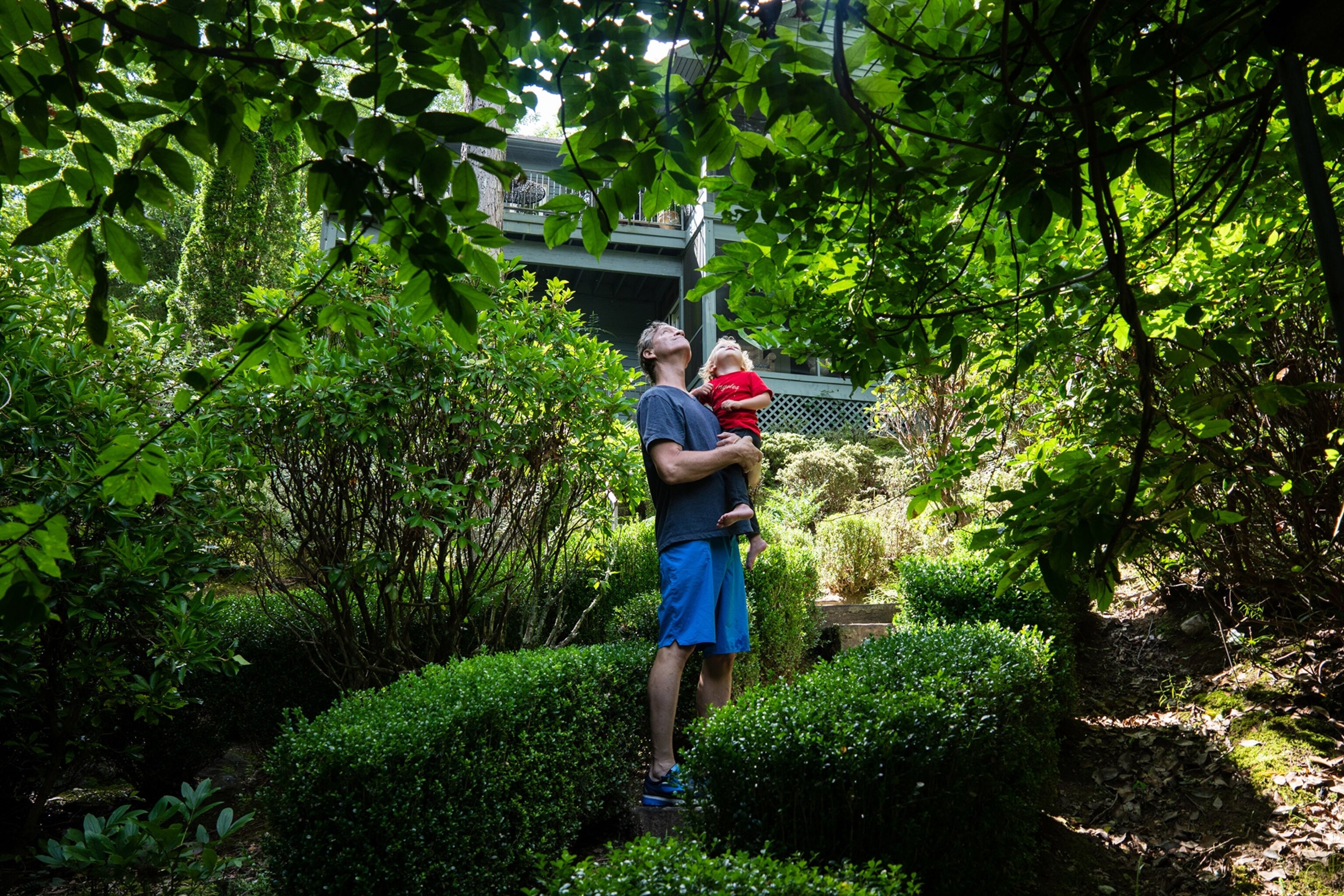
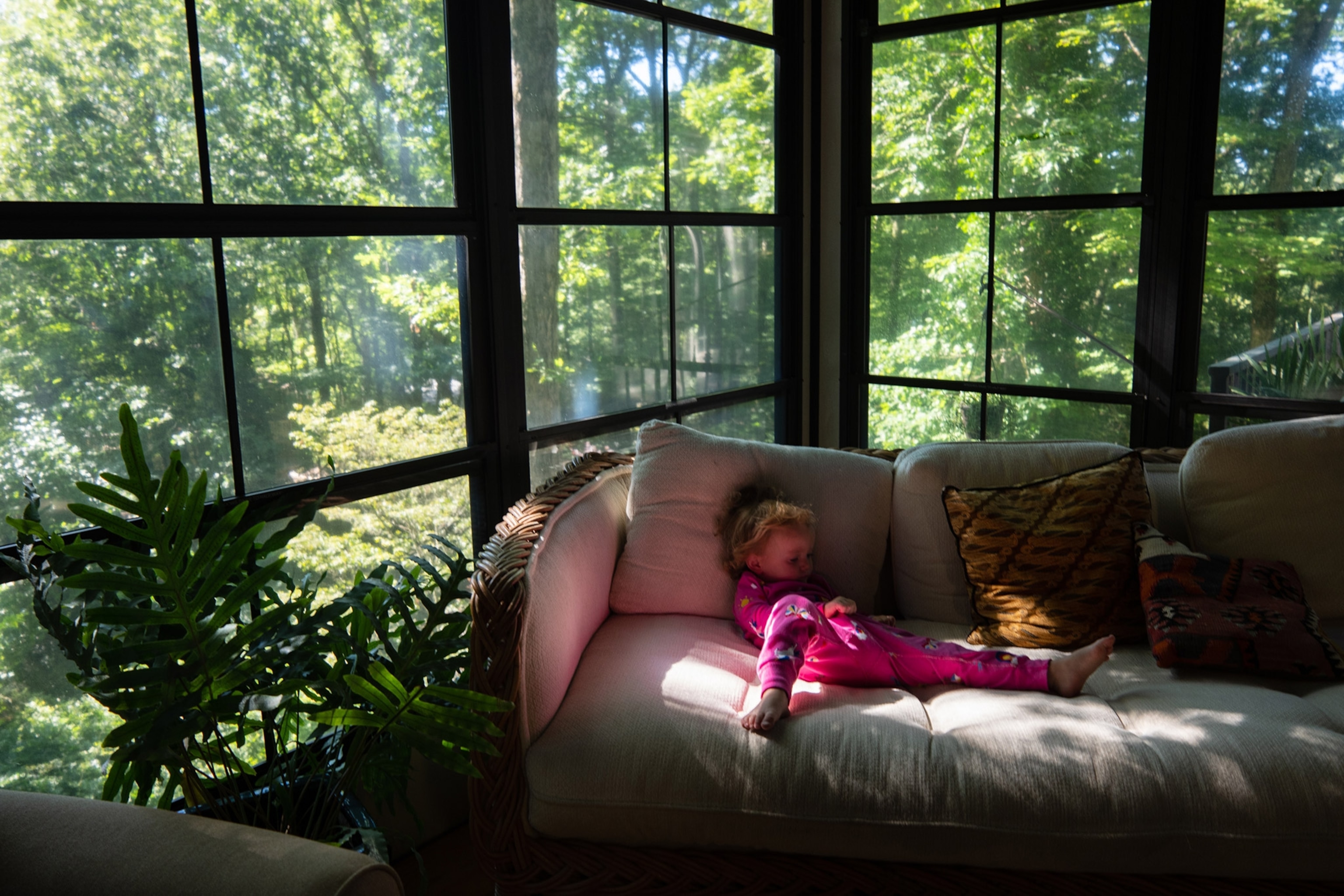
Call it working-from-beach home or a “flexcation” (Vrbo’s term): A silver lining of this terrible pandemic might be that more people can play digital nomad. Unfettered by cubicles or classrooms and armed with laptop computers, some Americans are living, working, studying, and playing in impermanent locations. “My partner and I usually spend two weeks each summer in Maine,” says Washington, D.C. actor Michael Russotto. “But with my stage work on hold and other gigs gone online, we decided to come for two months.” The couple is renting cottages for a month each in Ogunquit and Camden.
Here’s what to consider—and how to keep everyone safer—if you’re thinking about renting a place now.
What to look for in a rental
Pre-pandemic, an ideal vacation rental might have meant a few bedrooms, a spacious kitchen—perhaps a breezy porch for that morning mug of coffee or sunset glass of wine. Now, with homes-away-from-home serving as central command for play, work, and daily life, renters’ requirements are different.
If you’re planning remote work or school, make sure there really is high-speed internet and comfortable spaces to connect. “We definitely asked about Wifi and internet reliability, and also if they had rooms set up as offices,” says Tahoe renter George. Use Internet Providers by ZIP to check which internet service providers are in the area, which plans they offer, and what their customers have to say.
With restaurant service limited in some areas and many renters cooking at home, proximity to grocery stores is also a plus. The same goes for superstores that stock paper products, cleaning supplies, and other odds and ends.
Flexible cancellation and refund policies at a rental help during an unpredictable era when out-of-state quarantine and admittance restrictions fluctuate constantly. Travel insurance can provide some protection if plans change, but few policies cover cancellations due to COVID. Whether or not you buy insurance, look for properties with policies you think are fair.
Faced with a flurry of COVID-related cancellations in March, Park City Lodging—which operates 150 houses, condos, and townhomes in the Utah resort town—refunded guests’ money as a good faith measure. “The philosophy was what’s happening sucks, and it would suck not to get your money back,” says Heleena Sideris, who handles sales and guest relations for the company. “I encourage travelers to inquire what cancellation policies are and to understand that companies don’t have to stick to what their insurance provider dictates.”
Where to go
When zeroing in on where to temporarily hang your hat, think about how many other visitors will be there, too. “If you’re going to a beach town, crowded boardwalks are riskier than more remote locations,” says Phenelle Segal, a FAPIC (Professional in Infection Control and Epidemiology)-certified registered nurse and founder of Infection Control Consulting Services. Imagine you’re a horror movie villain and seek off-the-beaten-path properties—small town farmhouses, isolated cabins, maybe a houseboat. “The mountains are another great option,” she says. “There aren’t boardwalks or concert venues.”
Some areas in the U.S. are considered COVID-19 hot spots with high caseloads and exposure risks. Check the U.S. Centers for Disease Control’s COVID Data Tracker for updates, and choose a place with fewer cases if possible. If you live in a hot zone, don’t travel to a place with a lower number of COVID-19 cases since you might unwittingly spread the virus.
Some states also have travel restrictions for visitors, which could require anything from a negative COVID-19 test to a 14-day quarantine once you’ve crossed the border. Research what medical facilities are like at your destination, too. If you get sick, towns or counties with limited hospital services might not be where you want to be, and you don’t want to deprive locals of resources either.
Segal suggests renters choose a place within driving distance of home, eliminating the somewhat-elevated exposure risk that comes with airplane travel. Travelers appear to be embracing the idea. “We’ve seen a 15 percent jump in demand for vacation homes within 500 miles of home,” says Vrbo’s Fish. On July 8, Airbnb users booked more than one million nights’ worth of future stays for the first time since March 3, half of them in destinations within 300 miles of travelers’ homes.
How to stay safer
Even on a working vacation, you’ll want to keep up the safer pandemic habits you had at home. One of the most important factors to consider when renting is who you’re going to share your space with.
If you are headed to the woods or water with extended family or friends who haven’t been in your immediate household during quarantines and social distancing, set some ground rules to minimize exposure risks. Segal suggests that, for 10 days prior to a trip, everyone who is renting together self-quarantine, or, at least, limit going out. Some people are getting negative COVID-19 tests before renting a place with a select few others who have done the same, though Segal cautions this might bring a false sense of security.
(Related: Tips on taking a safer road trip.)
Chicagoans Jonathan and Kimberly Newbury and their two young sons have been riding out the pandemic as part of a friend “pod” they formed with another family. They forego restaurant outings in favor of cooking in each other’s homes, limiting contact with anyone outside their group. In August, the two families rented a lake house in Saugatuck, Michigan. The scenery around them changed, but their behavior didn’t. “We made meals in the house or we had takeout,” says Kimberly.
And while agencies like Airbnb offer single-room stays, Segal says to skip those, especially if the owners or other renters might be on the premises or—holy coronavirus toilet-flushing plume—sharing your bathroom. “The more people who are in an environment that you don’t have any control over, with respect to where they’re going, what they’re doing, and what their exposure risk is, the riskier it is [for you] because you’re sharing space,” she says. Book an entire home instead.
What to know about cleaning
Just like hotels, many rental companies have implemented exhaustive cleaning protocols and checklists. Earlier this year, Vrbo compiled a set of enhanced-cleaning guidelines for its homeowners based on information made available to the public by the World Health Organization and the CDC. Airbnb launched a new, five-step enhanced cleaning protocol in June.
Ask companies or owners what their cleaning methods are. One important question, Segal says, is whether the home or unit is left empty for a period of time between occupants so it can air out. Park City Lodging implemented a minimum-24-hour vacancy between guests; other companies even allow 48 hours to pass. “That way, we can at least have the property sit for a day,” says Park City Lodging’s Sideris. “We go in, we open all the windows, we ventilate, we clean, we sanitize.”
Your biggest risk of infection remains prolonged, indoor, face-to-face contact with other unmasked people. That cabin in the woods probably won’t give you a virus, but lengthy indoor chats with its owner or cleaning person might—so skip the daily housekeeping option if it’s on offer.
(Related: How to clean your face mask.)
Even at a place with stringent cleaning protocols, you can further ease your anxiety by using sanitizing wipes on high-touch surfaces such as light switches, faucets, bedside tables, and remote controls. “We came armed and dangerous,” says Kimberly Newbury of her family’s Michigan rental. “Before we let anyone in, we came in and disinfected all the surfaces—the handles, anything that anybody could touch—with Clorox wipes. I don’t trust anyone to clean it as well as I would.”
What to pack
Rental houses aren’t always stocked with essential, or even basic, supplies. Besides those cleaning wipes, you might be tempted to bring your own pillows and sheets. But studies find that contact with soft surfaces (and surfaces in general) isn’t the primary transmission method for SARS-CoV-2. Segal says that if you are still wary, be sure the owner or rental company is washing linens with detergent and hot water, which kills the virus.
Though trips in normal times would likely include checking out all the attractions near a rental, realize that 2020 probably won’t be the year that you visit two dozen churches in Paris or that your kids solve every escape room in Myrtle Beach, South Carolina. Plan—and pack—for more outdoor recreation and in-home time. “We brought water guns and a sprinkler for the kids to run through on the lawn,” says Jonathan Newbury. DVDs, board games your posse enjoys, sports equipment, and a jigsaw puzzle could also go in your trunk.
How to score a deal
Renting for a week or more? Consider asking for a lower rate. “Many hosts automatically apply discounts for stays of more than seven days,” says Plum Guide’s spokesperson Charlie Webber. “For longer-term bookings, we negotiate case by case.” Park City Lodging’s Sideris says that a two-bedroom condo might typically rent for around $130 per night ($3,900 for 30 days), but that a month in the same unit would be between $2,000 or $2,500. If you want a city escape, furnished corporate rentals could be an option, too, since many have seen rentals nosedive during the pandemic—and might offer discounts.
Maine long-term renter Russotto found that the weekly rates in 2020 were about half of what he had paid in prior years. “The owner of our first cottage said he’d cut his prices when business dropped due to coronavirus,” says Russotto. “He told us that if we wanted to come back next summer, he’d give us a better rate still, since he could avoid agency fees.”
Sensing a trend, some hoteliers are also offering reduced rates for lengthy bookings. At Jamaican luxury resort GoldenEye, a three-bedroom, oceanfront villa usually runs a hefty $2,320 a night, but if you commit to a 30 day or longer stay, the private lagoon, outdoor shower, and butler service all come at a 30 percent discount.











